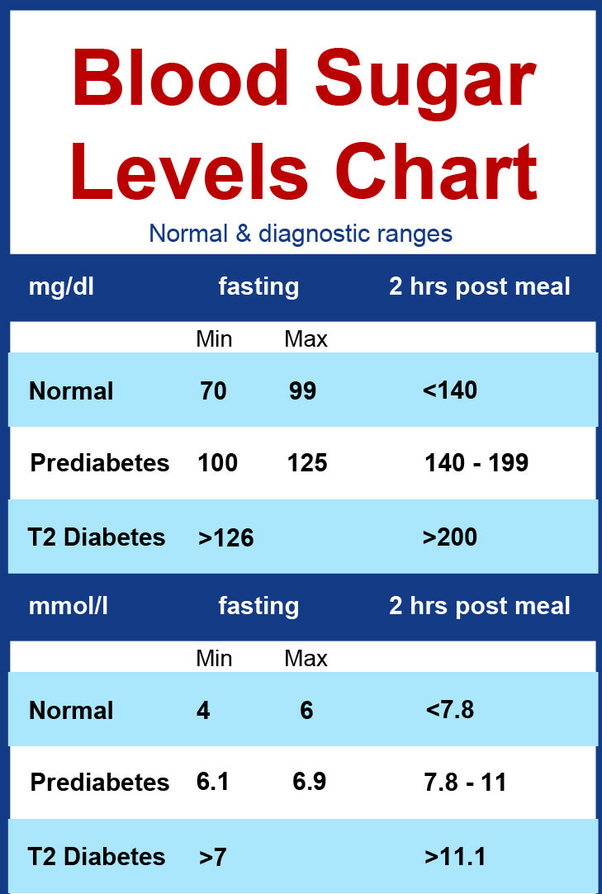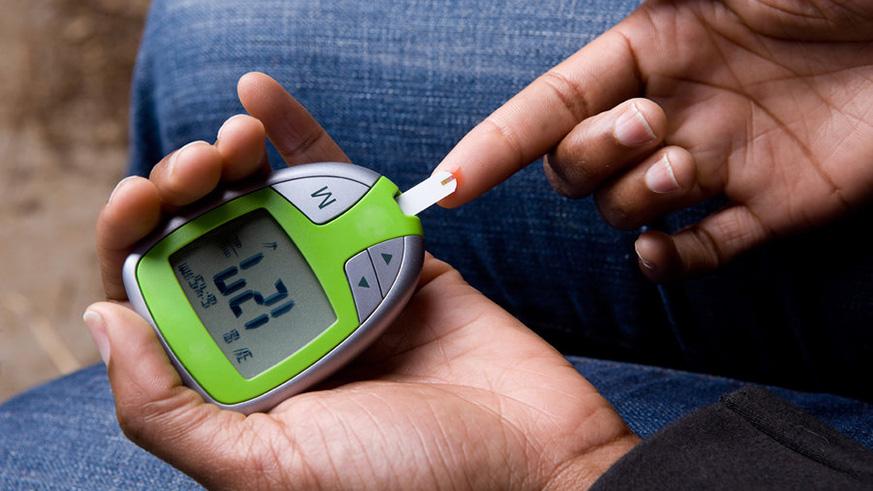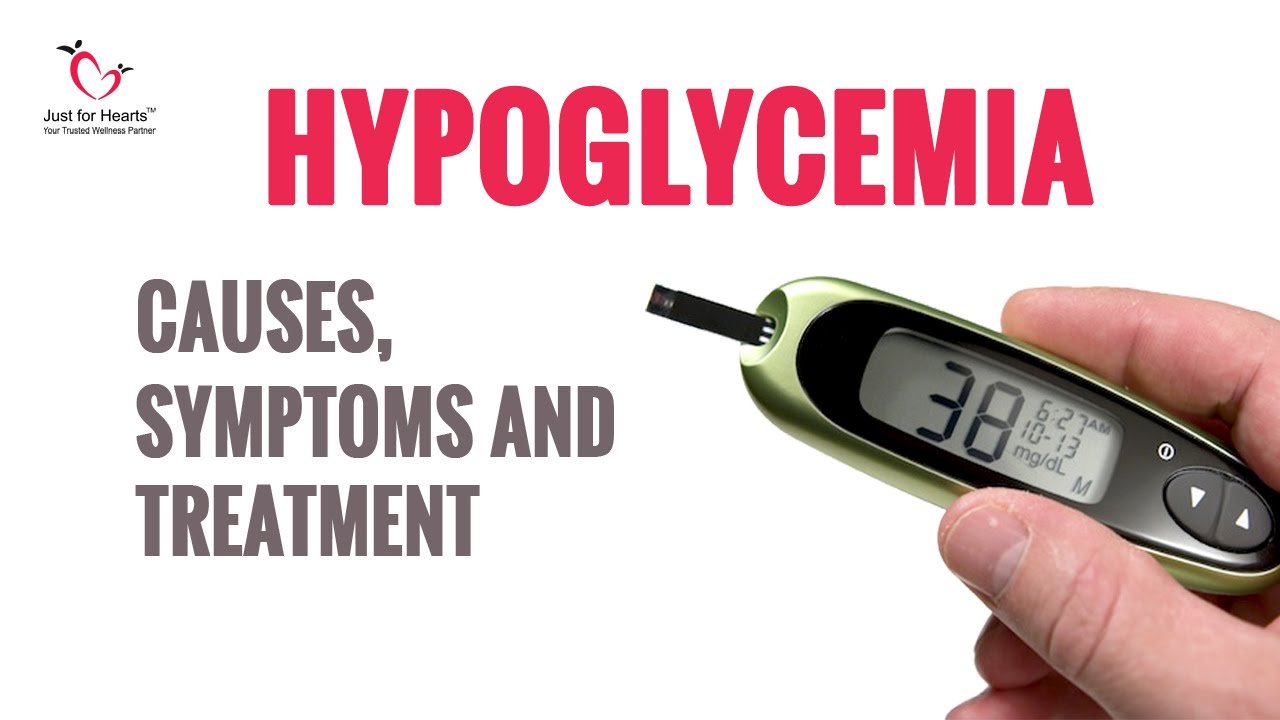What Is Blood Sugar
When you eat, the carbohydrate in your food is broken down into a usable form of energy called glucose. Glucose also known as sugar enters the bloodstream and a hormone called insulin helps move it into our cells.
This process lowers the amount of glucose in the bloodstream. When this process works efficiently, your muscles and organs have the fuel they need without there being too much glucose remaining in the blood.
Treating Low Blood Sugar
You are at risk of having a low blood sugar reaction if you:
- Skip or delay a meal or snack
- Take too much insulin or eat too few carbohydrates
- Exercise
- Drink alcohol, especially without eating carbohydrates
Check your blood sugar if you have any of these symptoms:
- Weakness and/or fatigue
If your blood sugar is less than 70 milligrams per deciliter :
- Eat 15 to 30 grams of carbohydrate
- Wait 15 minutes and then recheck your blood sugar
- If your blood sugar is still less than 100 mg/dl, take another 15 grams of carbohydrate and retest your blood sugar in another 15 minutes. Repeat if necessary.
Important: If you have frequent low blood sugars speak to your doctor. You may need changes in your medication and/or meal plan.
Why Do I Need To Know My Blood Sugar Numbers
Your blood sugar numbers show how well your diabetes is managed. And managing your diabetes means that you have less chance of having serious health problems, such as kidney disease and vision loss.
As you check your blood sugar, you can see what makes your numbers go up and down. For example, you may see that when you are stressed or eat certain foods, your numbers go up. And, you may see that when you take your medicine and are active, your numbers go down. This information lets you know what is working for you and what needs to change.
Don’t Miss: Insulin Inhibits Gluconeogenesis
High Blood Sugar: Hidden Dangers
In the short term, high blood sugar levels can zap your energy, cause excessive thirst and urination, and blur your vision. High blood sugar levels can also lead to dehydration, dry and itchy skin, and infections. Minimizing the time spent above your target blood sugar range can help you feel your best and will help prevent complications and injury to your body.
Over time, high blood sugar affects many parts of the body. Chronic high blood sugar can start to cause noticeable changes, including:
- Memory problems
- Vision problems like blurriness, diabetic retinopathy, and blindness
- Gum disease that leads to tooth loss, which can make eating healthy foods difficult due to problems chewing
- Heart attack and stroke due to increased plaque build-up in the vessels and other vascular issues
- Kidney disease, which can lead to the need for dialysis or a kidney transplant
- Nerve damage that can cause decreased sensation in the feet and legs which increases the risk for wounds to turn into serious infections and even amputation
Nerve damage from high blood sugar can also cause a variety of symptoms including:
- Pain and tingling in the feet and hands
- Difficulty emptying your bladder
- Problems during the digestion process after eating, which can cause food to sit in the stomach too long and lead to nausea, vomiting, and erratic blood sugar levels
Checking your blood sugar frequently and taking immediate action when it is above range can reduce your risk of complications.
Overdose Of Diabetes Medication

A common cause of hypoglycaemia is taking too much insulin for your current needs. Insulin is a medication that helps control your blood glucose levels. It’s commonly used to treat type 1 diabetes and is also recommended for some people with type 2 diabetes.
A fall in blood glucose levels can also occur after taking too much oral hypoglycaemia medication, such as sulphonylurea, which causes a release of insulin. This medication is often used to lower blood glucose levels in people with type 2 diabetes.
Recommended Reading: Oatmeal Carbs Diabetes
What Is The Outlook For People With Hypoglycemia
Hypoglycemia can be managed when you and your healthcare provider understand what causes your blood sugar to go down. Give your healthcare provider as much information as possible about any hypoglycemic episodes. Fixing the problem may be as simple as changing the times you take medication, eat and exercise. Minor changes to the types of food you eat may also help.
What Is Normal Blood Sugar
Normal blood sugar or blood glucose levels are between 80 and 130 mg/dL. That number is an average of what is normal for individuals with diabetes. When blood sugar levels are too high, the person may experience hyperglycemia. Hyperglycemia can be characterized by extreme thirst and urination, blurred vision, or shakiness, sweating, dizziness, or confusion. When the person has low blood glucose, they may experience hypoglycemia which can be characterized by sweating, dizziness, or confusion.
The range of normal blood glucose levels for people with diabetes is between 80-130 milligrams per deciliter . A persons individual level will depend on many factors including how old they are, their ethnicity, their weight and height, and the activity theyve performed recently.
Read Also: Insulin Suppression
Other Severe Symptoms Of Hyperglycaemia Include:
- Nerve damage
- Kidney damage
- Blood vessel damage
Mild hyperglycaemia, depending on the cause, will not typically require medical treatment. Most people with this condition can lower their blood sugar levels sufficiently through dietary and lifestyle changes.
Those with type 1 diabetes will require the administration of insulin , while those with type 2 diabetes will often use a combination of injectable and oral medications , although some may also require insulin.
Causes Symptoms Diagnosis Treatments And Support
With Elena Christofides and Jennifer Shine Dyer MD, MPH
When youre diabetic, a severe drop in blood sugar can strike even when youre doing everything right. Glucose is your bodys main source of energy and fuels your brain, so its critical to recognize the early signs of an episode before it becomes severe enough to cause you to pass out or worse. Were here to empower you with clear answers to all your pressing Qs.
| | | | | | Fast Facts |
Recommended Reading: Can A Diabetic Have Cheese
When You Have Low Blood Sugar
First, eat or drink 15 grams of a fast-acting carbohydrate, such as:
- Three to four glucose tablets
- One tube of glucose gel
- Four to six pieces of hard candy
- 1/2 cup fruit juice
- 1 cup skim milk
- 1/2 cup soft drink
- 1 tablespoon honey
Fifteen minutes after you’ve eaten a food with sugar in it, check your blood sugar again. If your blood sugar is still less than 70 mg/dL, eat another serving of one of the foods listed above. Repeat these steps until your sugar becomes normal.
What Are Considered Normal Blood Sugar Levels
If you ever suspect that your blood sugar might be low, you can monitor your levels with a test kit from your local pharmacy or doctor. Frequent sugar monitoring is important, as severe hypoglycemia that goes untreated can lead to dangerous outcomes such as coma or even death. Low blood sugar is generally defined as 60 mg/dL or less, but it can vary due to time of day, meals, and other factors. The table below provides blood sugar level goal ranges for people with and without diabetes.
| Time of day |
|---|
| Less than 120 mg/dL |
You May Like: What Percentage Of Type 2 Diabetics Take Insulin
Checking For Low Blood Sugar Levels
The warning signs of hypoglycemia are the body’s natural response to low blood sugar levels. When blood sugar levels fall too low, the body releases the hormone adrenaline, which helps get stored glucose into the bloodstream quickly. This can make someone:
- pale
- start shaking
- have an increased heart rate
If the hypoglycemia isn’t treated, more serious symptoms may happen, such as drowsiness, confusion, seizures, and loss of consciousness.
The only way to know for sure if you’re having a low blood sugar level is to test. Blood sugar levels can be tested with a . This computerized device measures and displays the amount of glucose in a blood sample. But if you can’t quickly check your blood sugar level, it’s important to treat yourself for hypoglycemia immediately to prevent symptoms from getting worse.
Sometimes a person with diabetes may have symptoms of low blood sugar levels, but blood sugar levels are not actually low. This is a called a false reaction. The hormone adrenaline is not just released when blood sugar drops too low it’s also released when blood sugar levels fall quickly when they’re too high. If you’re having a false reaction, you might actually have blood sugar levels in a healthy range but feel as if you have low blood sugar. Testing blood sugar levels before treating yourself for hypoglycemia can help you figure out if you’re having a false reaction.
page 3
Causes Of Low Blood Sugar

There are many reasons why you may have low blood sugar, including:
- Taking too much insulin.
- Not eating enough carbs for how much insulin you take.
- Timing of when you take your insulin.
- The amount and timing of physical activity.
- Drinking alcohol.
- How much fat, protein, and fiber are in your meal.
- Hot and humid weather.
- Unexpected changes in your schedule.
- Spending time at a high altitude.
- Going through puberty.
- Menstruation.
Read Also: How Many Carbs Should A Diabetic Have A Day
Severe Low Blood Sugar
As your low blood sugar gets worse, you may experience more serious symptoms, including:
- Feeling weak.
- Having difficulty walking or seeing clearly.
- Acting strange or feeling confused.
- Having seizures.
Severe low blood sugar is below 54 mg/dL. Blood sugar this low may make you faint . Often, youll need someone to help you treat severe low blood sugar.
People with diabetes may experience low blood sugar as often as once or twice a week, even when managing their blood sugar closely. Knowing how to identify and treat it is important for your health. Learn how to treat low blood sugar.
The Causes Of Low Blood Sugar
Low blood sugar levels can happen to kids with diabetes because of the medicines they have to take. Kids with diabetes may need a hormone called insulin and/or diabetes pills to help their bodies use the sugar in their blood. These medicines help take the sugar out of the blood and get it into the body’s cells, which makes the level of sugar in the blood go down.
But sometimes it’s a tricky balancing act, and blood sugar levels can get too low. Kids with diabetes need to keep their blood sugar levels from getting too high or too low. How do they do it? With help from grown-ups, they keep three things in balance:
Each one of these can affect the other. For instance, eating more might mean a kid needs more insulin. And exercising might create the need for an extra snack. Again, a grown-up can help you learn how to juggle those three activities so you keep feeling good.
Some things that can make low blood sugar levels more likely to happen are:
- skipping meals and snacks
- not eating enough food at a meal or snack
- exercising longer or harder than usual without eating something extra
- getting too much insulin
- not timing the insulin doses properly with meals, snacks, and exercise
- taking a long bath or shower right after an insulin shot
p
Also Check: Does Insulin Affect Blood Pressure
What Is Low Blood Glucose
Low blood glucose, also called low blood sugar or hypoglycemia, occurs when the level of glucose in your blood drops below what is healthy for you. For many people with diabetes, this means a blood glucose reading lower than 70 milligrams per deciliter .1 Your number might be different, so check with your doctor or health care team to find out what blood glucose level is low for you.
Recommended Target Blood Glucose Level Ranges
The NICE recommended target blood glucose levels are stated below for adults with type 1 diabetes, type 2 diabetes and children with type 1 diabetes.
In addition, the International Diabetes Federations target ranges for people without diabetes is stated.
The table provides general guidance. An individual target set by your healthcare team is the one you should aim for.
| Target Levels |
|---|
*The non-diabetic figures are provided for information but are not part of NICE guidelines.
Recommended Reading: Ginger Ale Good For Diabetics
What Extreme Conditions Can Occur If Hypoglycemia Is Left Untreated
Although severe episodes which can trigger potentially life-threatening comas are rare, they require immediate emergency room care, so its best to make sure you are tracking your blood sugar so that you never have to worry about getting to that point. A drop in blood sugar means less fuel for your brain, so its critical for your body to receive enough glucose. Hypoglycemia that leads to extended, reduced brain function is the biggest concern, as this can lead to seizures and loss of basic bodily functions controlled by the brain, which can ultimately lead to death, explains Dr. Dyer.
Symptoms Of A Low Blood Sugar Level
A low blood sugar level can affect everyone differently. You’ll learn how it makes you feel, although your symptoms may change over time.
Early signs of a low blood sugar level include:
- sweating
- a fast or pounding heartbeat
- becoming easily irritated, tearful, anxious or moody
- turning pale
If a low blood sugar level is not treated, you may get other symptoms, such as:
- weakness
- unusual behaviour, slurred speech or clumsiness
- feeling sleepy
- seizures or fits
- collapsing or passing out
A low blood sugar level, or hypo, can also happen while you’re sleeping. This may cause you to wake up during the night or cause headaches, tiredness or damp sheets in the morning.
Recommended Reading: Does Low Blood Sugar Mean You Have Diabetes
Impaired Awareness Of Hypoglycaemia
Impaired Awareness of Hypoglycaemia occurs when people do not feel the early warning symptoms of hypoglycaemia and only realise they are hypo when their BGLs drop very low or when they check their BGL. If you have had diabetes and hypos for many years the risk of not feeling the symptoms of hypos is more common. IAH can be dangerous because by the time you realise you are having a hypo you may find it hard to treat it and you could become unconscious.
If you have hypos without symptoms or your symptoms change, you may need to check your blood glucose more often. Always treat BGLs at 4mmol/L or below, even if you feel fine. If you have low BGLs without any symptoms you need to discuss this with your doctor or Credentialled Diabetes Educator.
Your Diabetes Devices And Hypoglycemia

Several insulin pumps are now available that make managing blood sugar levels easier, particularly when connected to a glucose meter or a CGM.
Some of the most important advantages of CGM devices are the improved insulin control and the ability to detect trends and lows early. With improved technology, it is now possible for parents to track blood sugar trends in their kids even when they are hundreds of miles apart .
In addition, automated insulin delivery systems, also known an artificial pancreas or a hybrid closed-loop system, will automatically adjust insulin to match your bodys need to help you spend more time in your target range.
Resources that provide people with T1D and their families with more detailed information about pumps and CGM devices are available through JDRF here. For people looking for a deeper understanding of technology that helps people with T1D better manage their blood sugar, JDRF resources are available here.
Don’t Miss: Insulin Phosphorylation
Treating Low Blood Glucose If You Take Medicines That Slow Down Digestion
Some diabetes medicines slow down the digestion of carbohydrates to keep blood glucose levels from rising too high after you eat. If you develop low blood glucose while taking these medicines, you will need to take glucose tablets or glucose gel right away. Eating or drinking other sources of carbohydrates wont raise your blood glucose level quickly enough.
Recognizing Low Blood Sugar
Individuals who have been diagnosed with diabetes learn to monitor their blood sugar levels closely. When blood sugar drops below normal levels, they learn to recognize the signs, such as dizziness or nausea. Diabetics often have a glucometer to determine if low blood sugar is the cause. Test strips can also determine if blood sugar levels have dropped too low. They can then take measures to raise their blood sugar to a normal range.
You May Like: How Is Metformin Metabolized
Listen To Your Doctor
If you follow a meal plan or take medications that increase insulin to manage low blood sugar, its important to stick to the plan your doctor prescribed to help prevent drops in your blood sugar level.
Not eating the right foods or taking the right medications at the correct times can cause your blood sugar to drop. Check in often with your doctor so they can adjust your treatment plan if and when necessary.
How To Treat A Low Blood Sugar Level Yourself
Follow these steps if your blood sugar level is less than 3.5mmol/L or you have hypo symptoms:
You do not usually need to get medical help once you’re feeling better if you only have a few hypos.
But tell your diabetes team if you keep having hypos or if you stop having symptoms when your blood sugar level is low.
Also Check: Should A Diabetic Get A Tattoo

